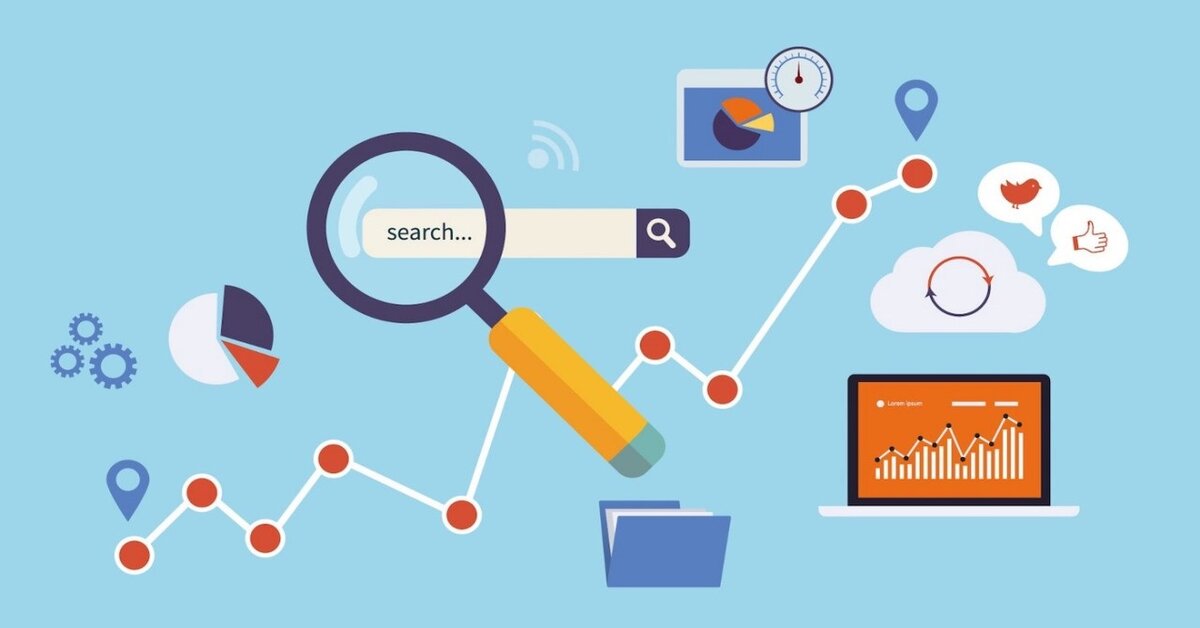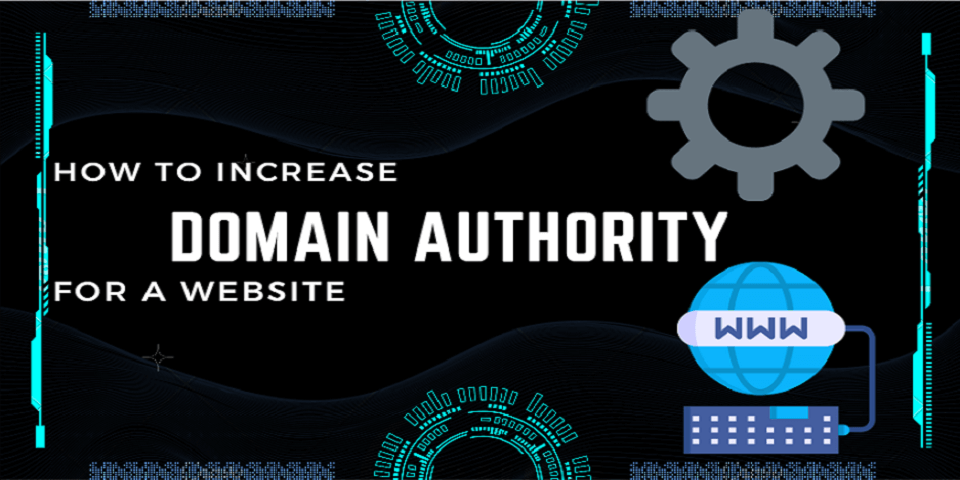How to Increase the Organic Traffic of A New Website?
If you’re launching a new website, it might take you anywhere from six months to one year to increase the organic traffic enough to rank the site at the top of the SERPs.
Even if you’re very lucky and are using a top-notch SEO strategy, it will still take your new website at least three months to start getting a steady stream of organic traffic.
The point is that generating organic traffic is a tough job, especially if your website is brand new. What you need is solid content planning and link-building strategies to produce results soon.
In this post, you will learn how to increase the organic traffic of a new website from 0.
What is Organic Traffic?
Organic traffic is the number of visitors that come to your website through unpaid search engine results.
In short, if your website pages show up (not in the sponsored section) in the search engine result pages and people click on them, they become your organic traffic.
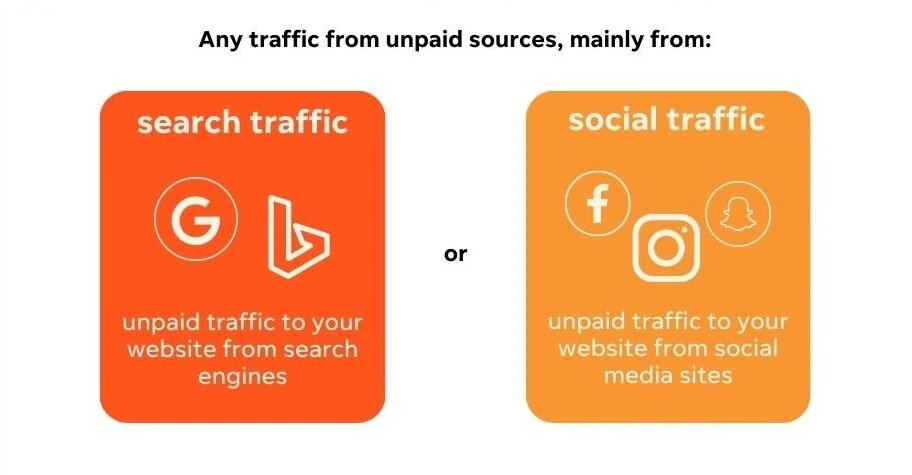
To boost the organic traffic flowing into your website, you must ensure that your site’s pages show up higher in the SERPs of Google, Bing, and similar search engines.
And the best way to do that is to focus on your SEO efforts.
Then, there is paid traffic – people who visit a site by clicking on the PPC ad listings on the search engine results.
To acquire paid traffic, you would have to advertise your web pages via PPC search ads. While you would only be charged if someone clicks on the ad to visit your website, once you stop the ads, you will stop getting traffic.
On the other hand, if you make your web pages rank higher in the SERPs using a solid SEO strategy, you will gain organic visitors for months. Years even.
You will get a steady stream of traffic to your website as long as people are interested in what you are offering.
Top 5 Benefits of Organic Traffic
Focusing on getting organic traffic is beneficial in the long term. The benefits include:
- Organic traffic is free (Well, not really. But it’s way cheaper than acquiring paid traffic in the long term).
- You can reach people residing in any part of the world.
- Your brand and product can reach many people who have never heard of your company before.
- Gaining organic traffic builds credibility.
- The traffic gained via organic means is highly relevant to the brand and its offers. In short, they are highly likely to be interested in what you have to offer.
But organic traffic is not all rainbow and sunshine. It also has a few downsides. For example:
- It has a slow growth rate.
- Even though organic traffic is free, to grow it, you need to make some investments in your ends like SEO, backlinks and content creation, to name a few.
Organic Traffic vs Paid Traffic: Which is Valuable?
The cost of acquiring traffic is one of the biggest differences between organic search and paid search traffic.
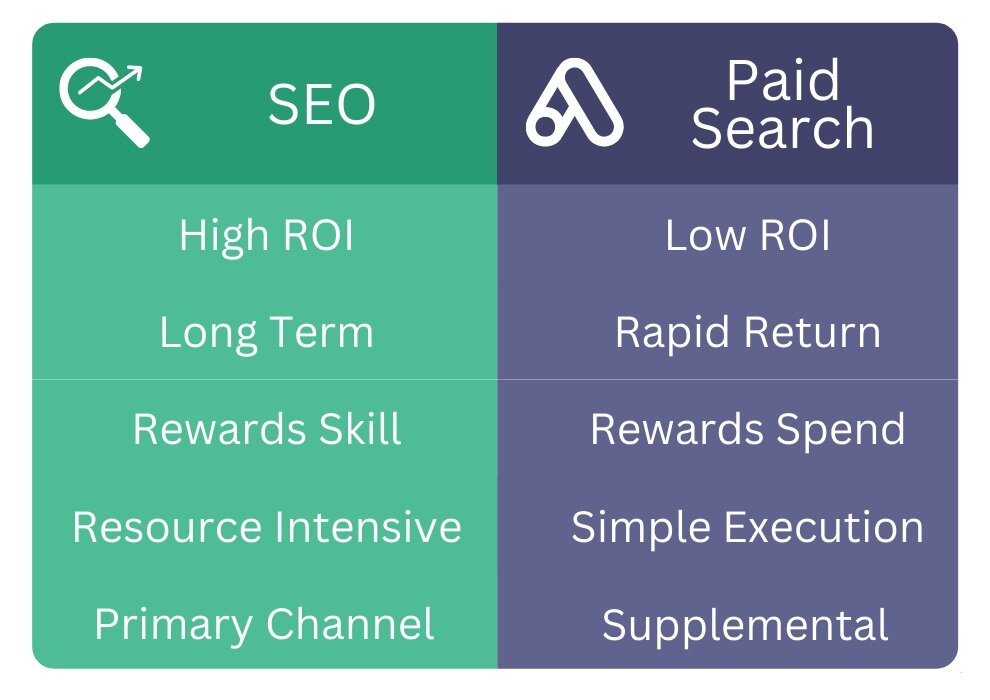
Now, here’s the thing – running a paid search or PPC search campaign can be pretty expensive. Some high-value keywords might even cost companies hundreds of dollars for every single click.
The result – all you get is a few link clicks that might not even convert, costing you thousands of bucks.
On the other hand, organic traffic, which is highly relevant to your business offers, can generate a lot of link clicks without any direct cost.
The value of organic search traffic far outweighs the paid traffic by a huge margin in the long term.
For example, a study from Semrush found that eBay.com generated nearly 72 million organic traffic (basically, free traffic) in May 2023. To replicate the same result via a Google PPC ad campaign, the company would have needed to fork out around $27.9 million.
7 Effective Ways to increase the Organic Traffic of a New Website from 0
Wondering how to grow the organic traffic of your new website from scratch?
To bring organic traffic to your website, you need to follow proper SEO strategies and best practices. Now, you can do many things to raise your site’s traffic from day one.
But to get the best results, you must do the following things first:
1. Audit Your Websites for Technical Issues
Search engines like Google and Bing must be able to crawl all over your website and index its web pages with ease.
After all, how can Google rank your web pages if it can’t even index them to its database?
To ensure faster indexing, your site must have a solid technical foundation. Your site shouldn’t have broken links, duplicate pages, pages with slow loading speeds, or search engine crawling issues.
And for that, you need to audit the website.
You can either hire an SEO agency to audit your website or you can do it yourself using tools like Semrush, Ahrefs, Moz Pro, Google Search Console, etc.
This way, you can discover if your website has:
- Broken links
- Duplicate page titles
- Site indexing issues
- Missing or flawed XML sitemaps
- Missing alt tags
- Incorrect Robot.txt
- Slow page loading speed and other technical issues
These issues are bad news for your site’s search engine visibility, audience experience, and search engine ranking.
So, if these issues pop up after the technical audit, you must fix them as soon as possible to grow the organic traffic of your website.
2. Find Keywords to Drive Your SEO Strategy
Keyword research is probably one of the first things that comes to your mind when you think about how to increase the organic traffic of your website.
And you’re absolutely correct to think about it.
With keyword research, you will be able to:
- Find the right things to write about and publish them on your website.
- Identify what your potential customers are interested in.
- Discover keywords with high search volume and low competition to rank your website higher in the SERPs with ease, and drive more traffic.
- Find keywords your competitors are using to gain more traffic but you don’t.
If you see more than one of your competitors constantly ranking higher for a set of keywords, you should also consider optimizing new and old web content with that set of keywords too.
After all, if it works for them and your website provides similar services, those keywords should work for you too.
But before picking them, pay close attention to important keyword parameters, such as monthly keyword volume, keyword difficulty, and the search intent associated with those particular keywords.
The goal is to find keywords with a good balance of search volume and keyword difficulty.
As long as these keywords satisfy the search intent requirement, you should use them to optimize your web content.
With consistent effort, your web pages should rank higher in SERPs for your targeted keywords within a few months, increasing organic traffic.
3. Create God-tier Content
Countless blogs on the internet publish more than 8.5 million blog posts every single day.
Yet, a very small portion of them make it to the first page of the SERPs for their targeted keywords. And an even smaller portion seems to attract organic traffic consistently.
What are those few websites doing that others aren’t, which makes people turn their heads to them? How can you increase the organic traffic of your website just like them?
The answer is high-quality, relevant content.
Your website needs to produce god-tier content to attract and retain a high volume of organic traffic and make it convert.
After all, even if you’re able to capture traffic with impeccable SEO strategies at first, if your content quality is poor, people will leave your website real quick. And if this continues, your web pages’ search engine ranks will eventually drop.
Now, you may ask – what does god-tier content look like?
Even though we would like to talk about it all day, we won’t discuss it here in detail today. What’s more – Google has published a detailed search quality evaluation guideline, which explains what high-quality content should look like.
According to Google, quality content should be:
- Easy to read
- Actionable
- Crisp and clear
- Informative
- Well-researched
- Nicely formatted
- Expertly written without obvious grammatical errors
Do this and your website’s ranking for the targeted keywords will definitely soar, leading to an increase in organic traffic.
4. Reach out to the Influencers
Influencers from multiple social networks like Instagram, Snapchat, or Pinterest usually have a big yet loyal following. And the best part – the followers of social media influencers engage with every single one of their posts with a high degree of zeal.
You can collaborate with these influencers and have them mention your brand in their social media posts or other content.
Of course, you can also decide to make them create original content specifically crafted to feature your brand.
This way, hundreds of thousands of people who follow those influencers will be aware of your brand.
These followers who trust the figures they follow are more likely to visit your website, giving you a chance to increase your organic traffic and capture prospective customers.
5. Use Paid Advertisements
Well, this isn’t exactly a free way to attract traffic to your website. However, if you use the paid ads in the right way, this investment can bring a good volume of organic traffic in the long run.
SEO is important (very, very important), and there’s no doubt about that. However, it will take several months to get a considerable amount of organic traffic using this tactic alone.
And your business can’t stay idle all these months, can it?
So, you should focus on paid ads like display ads, social media ads, and search PPC to drive highly targeted traffic to your website.
6. Work on Your Local SEO
Do you have a brick-and-mortar settlement and want to attract people near your location to your business? If that’s the case, you need to take care of your local SEO.
This way, whenever people search for a business nearby using your targeted keywords, your website and shop will show up in their search results.
The result is an increase in organic traffic to your website and more visitors to your offline establishment.
To do it, you must:
- Add your business to online listings like Yelp, Google My Business, and TripAdvisor.
- Make sure to add your valid name, contact info, and official business address to those listings, social media, and your website.
- Try adding your business to local directories and online map apps like Apple Maps.
- Encourage your customers to leave reviews on your social media pages, Yelp, Google Business page, and other popular review sites.
7. Set up Your Google Business Profile
Setting up your Google Business profile is yet another way to boost your local SEO.
If you do it right, you will be able to attract local traffic to both your website and brick-and-mortar settlement.
The entire process of setting it up is pretty simple.
You can either ask your SEO agency to set it up or you can do it yourself by following the Google Business Profile guideline.
How to Check Organic Traffic?
As long as you’re the owner of the website, you can check the site’s organic traffic statistics for free using:
- Google Analytics
- Google Search Console
Here’s how you can check your organic traffic using these free tools from Google:
1. Steps to Check Organic Traffic Using Google Analytics
A) For Universal Analytics:
- Sign into your Google Analytics account.
- Navigate to Acquisition → All Traffic → Channels → Organic Search
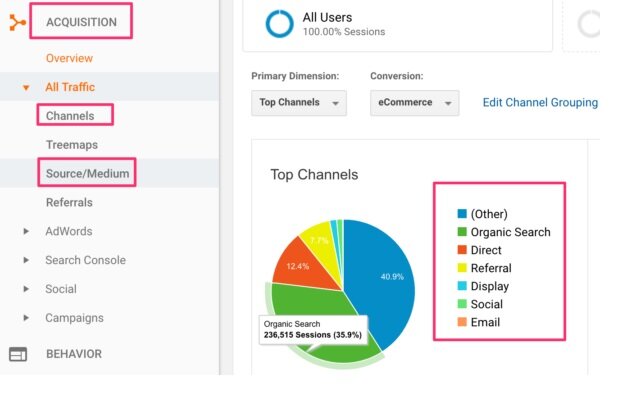
B) For Google Analytics 4:
- Visit your Google Analytics 4 account.
- Look for the “Reports” option and click on it.
- Navigate to Acquisition → Traffic Acquisition → Organic Search
2. Steps to Check Organic Traffic Using Google Search Console
To check your website’s organic traffic using Google Search Console:
- Visit the Google Search Console account associated with your website.
- Click on the “Search Results” option under the “Performance” section.
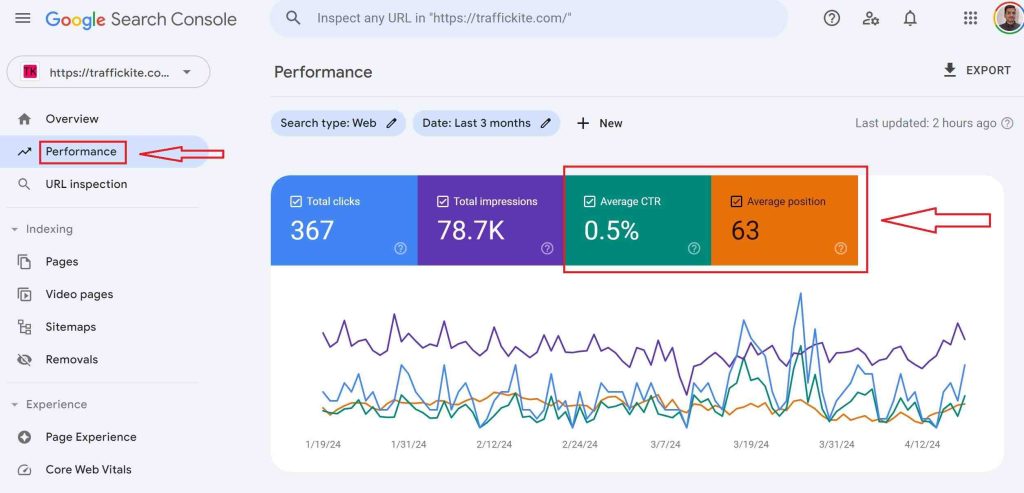
How does Traffic Kite help to increase traffic to new websites?
We have already explained how to increase the organic traffic of a new website from scratch above. But does it actually work?
Well, it does.
Traffic Kite helped Dr. Renu Nair, a dermatologist from Bangalore, increase her business site’s organic traffic from 0 to 2,000+ in just six months.
To increase the website’s organic traffic, we:
- Performed extensive keyword research to develop a customized SEO strategy.
- Used the target keywords to craft god-tier content.
- Boost local SEO by adding Dr. Renu Nair’s clinic and website to City blogs, health sites, citation listing and other relevant local backlinks.
Want similar results for your new website? Contact us now for success!
Conclusion
Whether you’re a big business or a new blogger, generating organic traffic for your website is the key to your success.
From auditing your website for technical issues to crafting SEO-optimized high-quality content to working on your local SEO, all the steps we have listed in this blog are crucial to increasing the organic traffic of your website from scratch.
Are you ready to take the next step to increase your website’s organic traffic?


